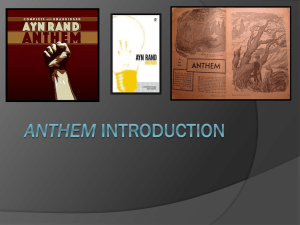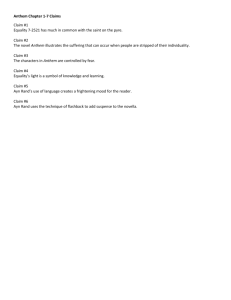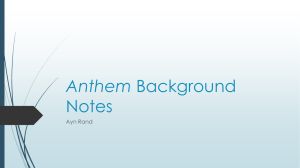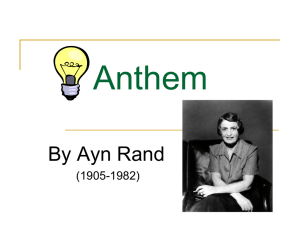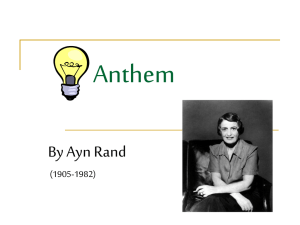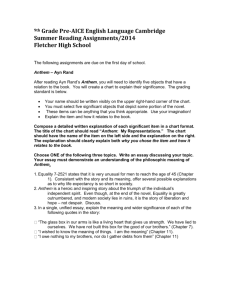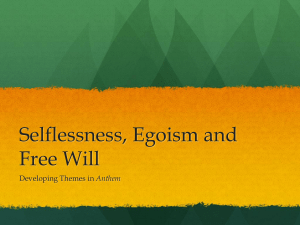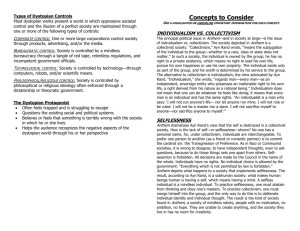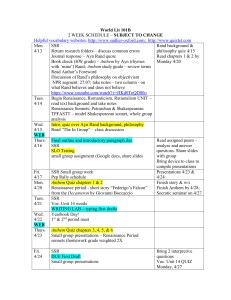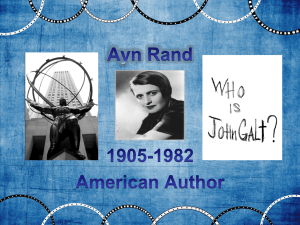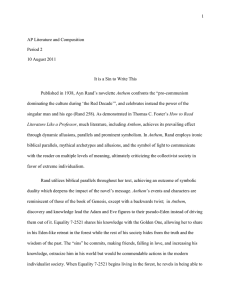Anthem - Palo Verde High School English 10
advertisement
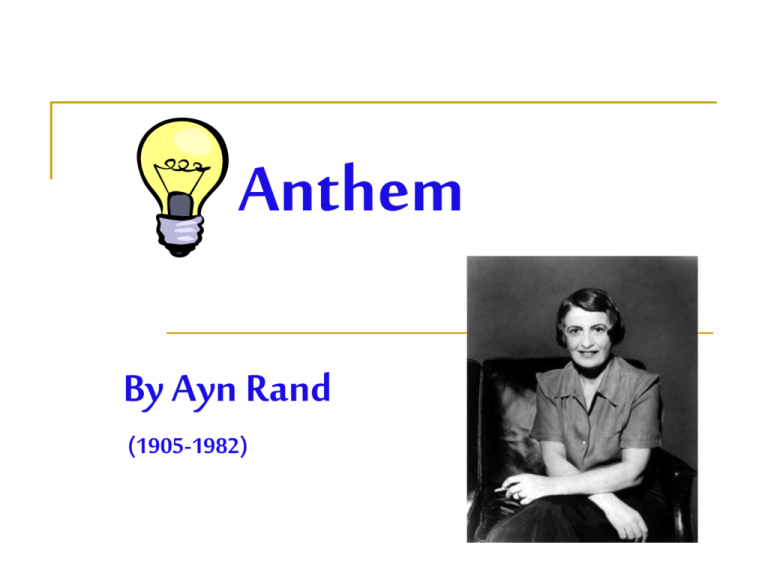
Anthem By Ayn Rand (1905-1982) Ayn Rand… She was born in St. Petersburg, Russia, on February 2, 1905. She opposed the collectivism of Russian culture. She witnessed both the Kerensky and Bolshevik Revolutions during her teenage years in Russia. The communist victory in Russia resulted in the confiscation of her father's pharmacy and periods of near-starvation for her family. When introduced to American history in her last year of high school, she immediately took America as her model of what a nation of free men could be. In late 1925, she obtained permission to leave Soviet Russia for a visit to relatives in the United States. Although she told Soviet authorities that her visit would be short, she was determined never to return to Russia, and she never did. Key Facts type of work · Novella genre · Dystopian (The world presented is the world as it should NOT be.) time and place written · The United States, 1937 narrator · Equality 7-2521 writes the journal of the events as they transpire over the course of several months. point of view · Equality 7-2521 speaks in the first person (plural) He will refer to himself as “we” instead of “I.” tone · Equality 7-2521 records his thoughts and actions in a straightforward manner, with no trace of irony. tense · Present, with some past-tense narration Key Facts setting (time) · Sometime in the distant future, after the collapse of the social order because of the common acceptance of collectivist values setting (place) · An unidentified city; protagonist · Equality 7-2521 Selflessness Anthem dramatizes the view that the self is destroyed in a collectivist society. Selflessness is shown in the following ways: No one has a personal name because under collectivism, individuals are interchangeable. To prefer one person over another (as a friend or romantic partner) is committing the cardinal sin known as the “Transgression of Preference.” It is wrong to disagree, to have independent thoughts, or to ask questions because these things will set you apart from others. Self-assertion is forbidden. All decisions are made by the “Council” in the name of the whole. Individuals have no rights. Everything which is not permitted by the law is forbidden. Selflessness (cont’d) Anthem depicts what happens to a society that implements selflessness. The result is what Ayn Rand believes is a subhuman society; what makes human beings human is having a self, which means having a mind. A selfless individual is a mindless individual. To practice selflessness, one must abstain from thinking and obey one’s masters. One must merge himself into the group and obliterate the individual identity. The result is a society of mindless robots as found in Anthem. Concepts in Anthem Rand presents a struggle between contrasting philosophies through the course of her novella. Rand refers to these philosophies in varied terms, including: Altruism – man exists to serve others and this self-sacrifice is the highest moral duty vs. Egoism – man’s primary moral obligation is to achieve his own welfare and well-being. Collectivism – the suppression of the individual to a group. Collectivism holds that man must be chained to a collective action and collective thought for the sake of the “common good.” vs. Individualism – every man is an independent and sovereign entity who posses an inalienable right to his own life; Individualism does not mean that one can do whatever he feels like doing; it means that every man or woman is an individual and has the same rights. Intro Activity 1 Read the poem “Invictus” by William Ernest Henley and answer the following questions: What kind of “night” could suppress an individual? What other language in the poem suggests the theme of oppression? Sum up the message of the poem in one sentence. How does the message compare to messages in the works of ancient literature we have read?
